5 Ways to Support Sustainable Restaurants


The American restaurant industry generated $825 billion in sales last year and employed more than 15 million people. Despite their collective financial clout, individual restaurants operate on slim profit margins. Constrained by small spaces and high expenses, restaurants often struggle to implement new systems that can lessen their impact on the environment and the communities they serve.
Composting in a restaurant, for example, means making space for separate bins and finding a waste management company that can handle organic material. Donating food offers its own set of challenges when fridges are already cramped with product that is being sold to customers. Still, as customer-driven businesses, restaurants can adapt their strategies to changing values and demands. This means diners have the ability to influence the way their favorite restaurants do business. Here are just a few ways to make your voice heard when choosing your next meal.
1. Support composting laws and the restaurants that follow them
Roughly 40 percent of all food produced in the U.S. goes to waste. Local composting ordinances reroute wasted food from landfills while encouraging individuals and businesses to take a second look at what they throw in the organic cart. In 2009, San Francisco passed legislation that mandates everyone (residents and businesses alike) to compost. Trash is separated into three bins: blue for recyclables, green for compost and black for landfill. Blue and green bins cost less monthly than black bins, so it makes financial sense to separate waste and minimize landfill-bound material. The city is targeting zero waste by 2020.
New York City took on a voluntary initiative in 2013 that's similarly aimed at reducing the amount of food waste its commercial businesses send to landfills. However, restaurants faced several issues in complying with the program as many have crammed kitchens and cannot afford space to add extra bins. Compost laws that provide a financial incentive are more likely to be followed. Additionally, when more customers choose sustainable restaurants over wasteful ones, restaurants will be more likely to find ways around composting and recycling challenges.
2. Search for seasonal menus
Chef Jeff Miller leads Mayanoki, the only 100 percent sustainable sushi restaurant in New York City. He accounts this accomplishment to serving seafood that does little to no harm to the environment or the species. Bluefin tuna, for example, makes an appearance on nearly every reputable sushi restaurant menu. It is also a threatened species, with the southern bluefin tuna classified as critically endangered. Mayanoki does not serve typical sushi-grade fish, like bluefin tuna. Instead, Miller uses inventive techniques to make invasive fish species shine on the menu.
The small sushi bar also obliges by the seasonality of ingredients with changing menus, a recent feature of many other environmentally-conscious restaurants. Choosing restaurants with seasonally-based menus guarantees fresh, sustainably-sourced ingredients in your meal.
3. Take on smaller portions
This strategy is especially effective in self-service, cafeteria-style settings—and case studies show that the way eateries present their food to customers makes a difference. Providing trays, for example, often encourages customers to take more food than they will actually eat: After the University of Massachusetts at Amherst removed trays from its dining halls, it observed a 30 percent drop in food waste. In sit-down settings, an increasing number of restaurants incorporate a range of portion sizes into their menus—such as small plates or half portions—to cut down on food waste.
4. Look for restaurants that work with donation groups
Hundreds of food rescue and donation organizations operate across the U.S. Restaurants that work with these organizations reap the benefits of appealing to customers and potential tax deductions. Any liability to the restaurant is minimized by the Bill Emerson Good Samaritan Act of 1996, a federal bill that was passed to encourage more establishments to donate their excess prepared food.
Customers who prioritize responsible solutions to waste in their decision on where to eat encourage restaurants to enact changes in their food waste management. The Green Restaurant Association's DineGreen.com, for example, allows customers to search for sustainable restaurants within their given location. Restaurants are awarded sustainability points by participating in programs such as surplus food donations.
5. Value restaurants that use whole products
When restaurant staff break down food products into edible portions, leftovers such as vegetable peelings, fat trimmings and animal bones are left behind. Composting is one way to take care of it, but using it for another purpose makes financial sense and shows greater respect for the products—hence the proliferation of restaurants that claim to use every piece of their ingredients. Valuing restaurants that are willing to put in the extra effort encourages others to follow suit.
The bottom line
More than 75 percent of global restaurant-goers want to see eateries be more forthcoming about how they source their ingredients, and around 60 percent seek out organic and sustainable fare, according to a 2018 survey from foodservice research firm Technomic. Additionally, in the restaurant sector, a mere $2,000 in savings can add up to $40,000 in new guaranteed revenue, according to the Green Restaurant Association, meaning small steps to reduce waste and source cheaper, seasonal ingredients can make a hefty impact on the bottom line.
As the business case for sustainability becomes more clear in the restaurant sector, the consumer voice remains one of the most powerful drivers. "Consumers’ growing demands for transparency, local sourcing and sensitive treatment of the people, animals, land and waters in the supply chain should not be ignored," Aaron Jourden, senior research manager for Technomic, wrote last spring. In other words: When consumers talk, this industry listens.
Image credit: Jay Wennington via Unsplash
Transition at Davos: Joining The Dots


In a time of populist anger some simply dismiss Davos, but it can connect multiple stakeholders from across business, government, civil society and most importantly, across most age groups.
Attending Davos for the World Economic Forum (WEF) Annual Meeting is like being thrown into the center of the parallel universes of big business, finance and civil society. Complex issues ranging from artificial intelligence (AI), cyber-crime, financial market reform, scaling up action on the SDGs, oceans, the future of democracy, and climate change all competed for air time.
Walk into any session on a topic outside of your own field and it can feel as if people solely inhabit their own universe with little knowledge of other disciplines. If they are aware, they have little understanding of how these debates might be relevant let alone impact their own.
On the first day of the WEF, I walked into a session entitled Rethinking Global Financial Risk. It featured a panel that included Axel Weber chairman of UBS, Ray Dalio, founder Bridgewater Associates, and Fang Xinghai, vice chairman of China’s Regulatory Commission. Speakers covered many pressing topics, particularly around the impacts for the global financial markets of an economic slow-down and rebalancing of the Chinese economy.
Yet even though the WEF’s own annual survey of global risks found four out of the top five risks people are concerned about relate to climate change, it was never even mentioned.
I made this point in a question from the floor and was told that yes it was an important risk but there were many other threats that had not been discussed such as AI and Brexit. While you can’t cover everything, it is important to remember those other challenges were nowhere near as prevalent in WEF’s global risks survey.
In a time of populist anger some simply dismiss Davos. I have found it is a place that uniquely brings together multiple stakeholders from across business, government, civil society and most importantly, across most age groups. Many are drawn because of the forum’s reputation and focus on issues relevant to them in their daily work.
I also observed a real desire and purpose to contribute to building a better future. Everywhere you see the tag line: Committed to Improving the State of the World. There is an understanding of the climate emergency and commitment to help tackle it going right to the top of the WEF.
Indeed, this year the forum has several co-chairs deliberately drawn from younger generations, including Mohammed Hassan Mohamud, a 28-year-old Somali refugee from a refugee camp in Kenya where he has spent the last 20 years and still lives. I was lucky enough to hear him speak and talk to him. Of all the brilliant, powerful and connected people in Davos I have met he was perhaps the most impactful and compelling.
The WEF would benefit from more representation from new voices, particularly those left behind by globalization. By seizing this opportunity, the forum could create the diverse dialogue essential to bringing a greater focus to global problems and forging the consensus needed to solve them.
Reflecting on this potential for a spectrum of voices, on the same day as a session of Rethinking Global Financial Risk and the presentation from Brazilian President Jair Bolsonaro, there was also a major session with Britain’s Prince William and David Attenborough on the existential threat posed by climate change. Many of those who attended other sessions attended this incredibly powerful conversation on the climate emergency.
Perhaps in many ways Davos is carefully orchestrated as a safe space for open conversations and building responses to key problems. It is also a unique place for speaking truth to power, where there is a chance leaders may be more open to listening because of the nature of the Forum.
In this regard, I attended a session on the energy transition and watched a fascinating exchange between the CEOs of ENEL and Occidental.
They went back and forth on the role of the energy transition and Carbon Capture and Storage (CCS). At one-point ENEL’s CEO challenged Occidental on the viability of CCS as a solution to emissions in the energy sector. I jokingly offered him a job at Carbon Tracker if he ever found himself at a loose end.
What struck me most at this session is that there is clearly a dawning realization that the energy transition is underway and that there is an economic tipping point away from fossil fuels in favor of clean energy. Prince William even acknowledged this in a question to David Attenborough during their conversation.
Organizations like Carbon Tracker have an important role to play in moving the discussion forward. In addition to changing the narrative around climate risk in the financial markets, we can provide the tools which will allow those attending sessions, such as the one on global financial risk, to see what climate means for individual companies, investments, and assets. For example, showing how climate risk through company level analytics impacts individuals, companies, and sectors.
However, what is still missing is the realization of how this should be a game changer — particularly in the political and policy sphere as we argue in our latest paper. This is important because the energy transition underway is unlikely to roll out quickly enough to achieve the climate targets we must meet to slow and stabilize warming.
The good news, as we argue in our paper, is that policymakers can now make policy that delivers more efficient and cheaper energy solutions that benefits the climate. This is a critical message I have been making at every opportunity here in Davos.
Previously posted on Carbon Tracker's blog on January 25.
Image credit: World Economic Forum
Is Larry Fink’s Latest Letter Enough to Move the Needle?
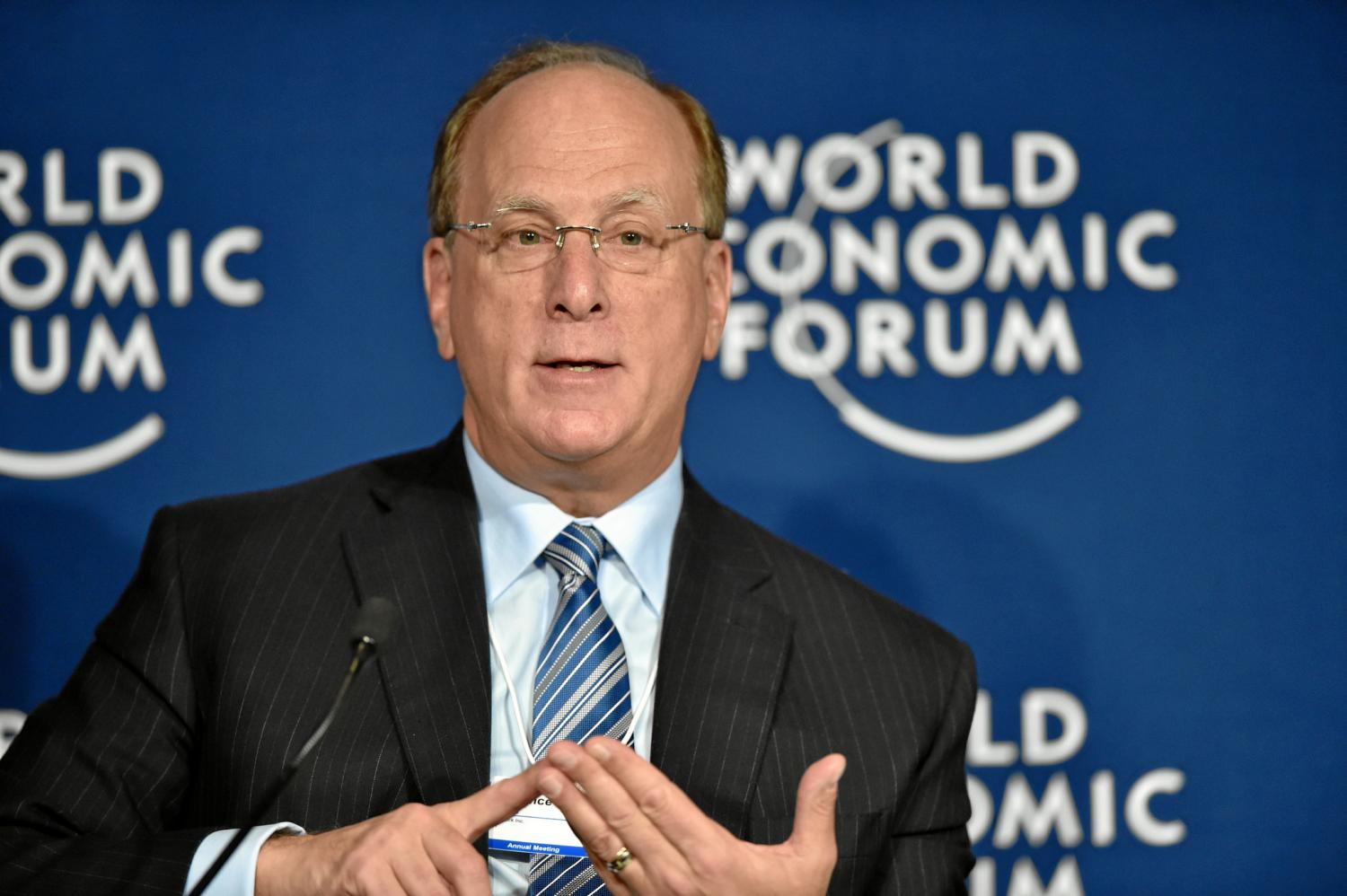

Larry Fink is in the news again, urging business to step into a leadership vacuum in a divided world.
The annual letter to CEOs from Larry Fink, the head of BlackRock, the world’s largest money manager which oversees nearly $6 trillion in assets, has become one of the most much-anticipated events in corporate America.
Fink’s 2018 letter, declaring companies should do more than make profits, set off a year of intense discussion in C-suites and board rooms and earned him the mantle of “the new conscience of Wall Street.”
His 2019 letter, Purpose and Profit, was even more provocative, urging corporate executives to step into a leadership vacuum in a divided world. “Stakeholders are pushing companies to wade into sensitive social and political issues — especially as they see governments failing to do so effectively,” he wrote in his new letter.
Fink’s missive is so influential that it even prompted a fake letter days before its release that was picked up by The Financial Times and other media before the hoax was revealed.
The bogus letter, whose origin is unclear, took a stronger stance on climate change, including divesting from coal companies in BlackRock’s actively managed funds, something that environmental activists have long pressured the firm to do. Fink’s actual letter made no such pledge—in fact the term “climate change” never appears.
Purpose strikes a chord
But Fink is adamant about pushing against economist Milton Friedman’s notion that a company’s only social responsibility is its profit. “Profits are in no way inconsistent with purpose,” he wrote. “Purpose is not the sole pursuit of profits but the animating force for achieving them.”
Fink wrote that he had “no intention” of telling companies what their purpose should be. “Rather, we seek to understand how a company’s purpose informs its strategy and culture to underpin sustainable financial performance.”
With 2018 the year where “purpose” was being widely embraced by companies as the new mantra, Fink’s words struck a resonant chord.
“The notion of purpose is not new and is widely held in evolved companies,” Hugh Welsh, CEO of science-based health and nutrition firm DSM North America, told TriplePundit. At DSM, he said, “our purpose instructs every aspect of the organization.”
Welsh said he welcomed the optimism of Fink’s letter. “What I found very forward thinking was the idea that corporate leaders should use their considerable financial, social, political and human capital to drive progressive social change on the issues of the day like climate change, inclusion and diversity, and technology issues.”
Too little, too late?
Fink’s letter “is even more relevant this year,” according to Brook Horowitz, a consultant on business ethics and integrity and CEO of IBLF Global, an NGO promoting responsible business practices. Yet, Horowitz says, he would have liked “more urgency, ambition and vision” in the latest letter.
“Given the chaos in politics and the dire warnings about climate change, one cannot help wondering if it’s not too little, too late,” he told TriplePundit.
When Fink writes that his Investment Stewardship team “has begun to speak to companies about corporate purpose” and how “we have been encouraged by the commitment of companies to engage with us on this issue,” Horowitz said he detects “a hint of complacency.”
“Perhaps he just doesn’t believe that the cultural change will happen in his life-time,” Horowitz told TriplePundit. “Of course, long-termism is fine, but you don’t want it to go on so long as to fail to prevent the collapse of society and the destruction of the planet. Somehow, [Fink] is still operating within his comfort zone, within the bounds of what he feels is feasible and possible.”
Raising a red flag
Fink is not alone in worrying about the state of the world. In his annual letter to investors, influential billionaire investor Seth A. Klarman also raised a red flag about global social tensions as business and political leaders gathered in the Swiss Alps for the World Economic Forum’s annual meeting.
“It can’t be business as usual amid constant protests, riots, shutdowns and escalating social tensions,” he wrote. “Social frictions remain a challenge for democracies around the world, and we wonder when investors might take more notice of this…Social cohesion is essential for those who have capital to invest.”
Pushing for BlackRock to act
Some think that bolder action should start with BlackRock itself. Ethos and other leading proponents of responsible investing wrote to Fink ahead of his annual letter urging him to better align BlackRock’s proxy voting with its stated ambitions on climate change by more broadly supporting climate-related shareholder resolutions.
BlackRock seems to be listening, judging from its announcement last week of a new environmentally conscious money market fund, the BlackRock Liquid Environmentally Aware Fund (LEAF). It would invest primarily in debt from issuers who have better-than-average environmental practices, BlackRock said, and 5 percent of the net revenue from its management fee from the fund would be used to purchase carbon offsets.
Pushing the pendulum faster
In his letter, Fink cited a Deloitte survey in which 63 percent of respondents thought that “improving society” was more important than “generating profit.”
Employees and shareholders have taken that stance in the last year, with employee outrage over Google’s controversial Pentagon artificial intelligence initiative; Microsoft’s contract with U.S. Immigration and Customs Enforcement Program; and shareholder pressure on Amazon’s sales of its facial recognition technology to the government among many examples
The expectations of millennials may be what really moves the needle. In his letter Fink noted the “largest transfer of wealth in history: $24 trillion from baby boomers to millennials.”
As TriplePundit has reported, millennials and Gen Z are poised to shake up the investment world, with 84 percent committed to socially responsible or impact investing.
“It’s a culture change Fink is advocating at both the company and societal level, and it will take time for it to become mainstream,” Horowitz said.
The question is whether the new generation of investors is willing to wait.
Image credit: World Economic Forum/Flickr
Visa Gives $1 Million to Feeding America’s Shutdown Relief Fund
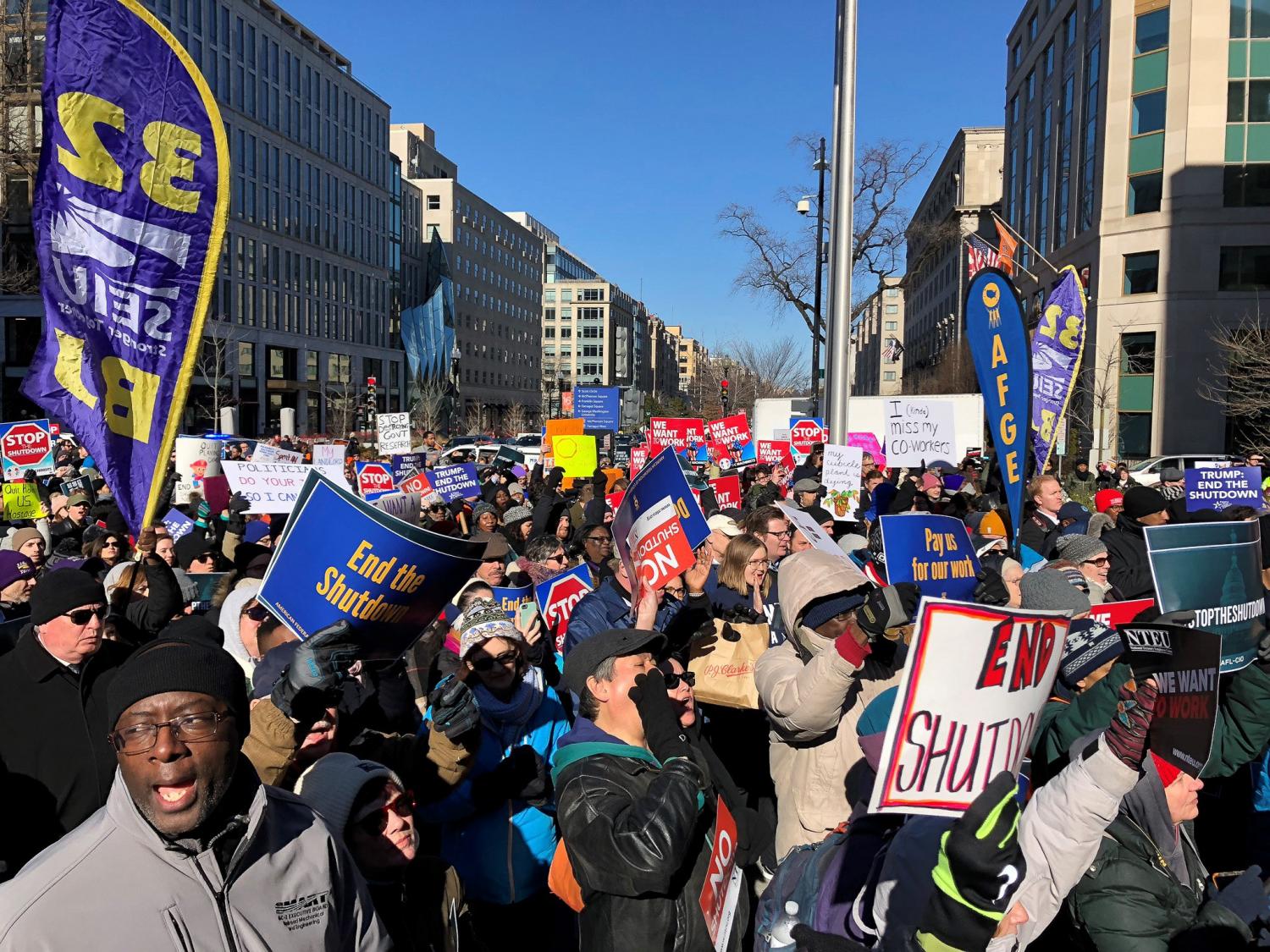

Federal government employees rally at the White House for an end to the government shutdown on January 10, 2019
Federal government employees rally at the White House for an end to the government shutdown on January 10, 2019
“Build the wall” started as a catchy campaign slogan for then-candidate Donald J. Trump in 2016. Now it has become a national nightmare. Hundreds of thousands of households across the U.S. are heading into their second month without a paycheck as the government shutdown drags on for more than a month, with no relief in sight, while President Trump holds out for Congress to appropriate funds to build the wall.
In addition to 800,000 federal workers affected by the shutdown, hundreds of thousands of workers under federal contracts have permanently lost their pay for the month, and tens of millions of individuals using federal food assistance programs stand to lose their access in the coming weeks.
So far, the corporate response has been relatively quiet, considering the magnitude of the havoc wreaked since last December, when President Donald J. Trump refused to sign a previously agreed-upon appropriations bill affecting nine executive agencies including the State Department, the Treasury Department, the Department of Agriculture and the Department of Homeland Security.
Visa and The Visa Foundation are among the few companies that have stirred into action on a national level. In a blog post yesterday, Visa announced that the Visa Foundation is contributing $1 million to Feeding America's Shutdown Response Fund.
In addition, Visa has announced that it will double its match for employee donations to Feeding America.
The company has also stated that it is encouraging employees to volunteer at local area food banks, and it is encouraging members of the public to donate directly to Feeding America.
More than a recitation of the company’s actions, the blog post was also a subtle appeal for help from other corporate leaders in the financial industry. In the post, Visa explains that it is a technology company. Unlike a bank, it does not issue cards or extend credit.
In another aspect of the appeal for a more vigorous corporate response, Visa’s blog post cited Andy Wilson, Chief Development Officer of Feeding America. Wilson emphasized that the funds will help support federal workers responsible for public safety and security, many of whom have been reporting for work despite anxiety over their financial situation, including TSA agents, members of the Coast Guard, park rangers, security guards and federal prison employees.
“We are so grateful to the Visa Foundation, Visa¸ and its employees for their commitment to our country’s public servants and their families, and their assistance to help them to get through this difficult time as they continue to keep our country safe,” said Wilson.
That emphasis on safety and security hits a wide mark and focuses attention on the ripple effect of the shutdown on the general public all across the country.
Also underscoring the broadly urgent nature of the situation is Visa’s decision to focus attention on the nation’s premier hunger organization.
In addition to coordinating a network of 200 member food banks and 60,000 partner agencies, Feeding America researches hunger issues and uses those findings to advocate for national policies on hunger and nutrition.
The organization summarized its relief and lobbying efforts in a January 15 statement, explaining that “we’re making sure lawmakers understand what we’re seeing – that many workers live one paycheck away from hunger.”
Absent an immediate end to the shutdown, the best-case scenario is for more major U.S. companies to follow the example set by Visa, step up, and fill the leadership gap left by a White House that its critics say is bankrupting the nation’s safety and security in favor of a simple, spiteful campaign slogan.
Image credit: AFGE/Wiki Commons
Hershey Aims to Cut the Carbon Footprint of its Chocolate with New Science-Based Target Commitment
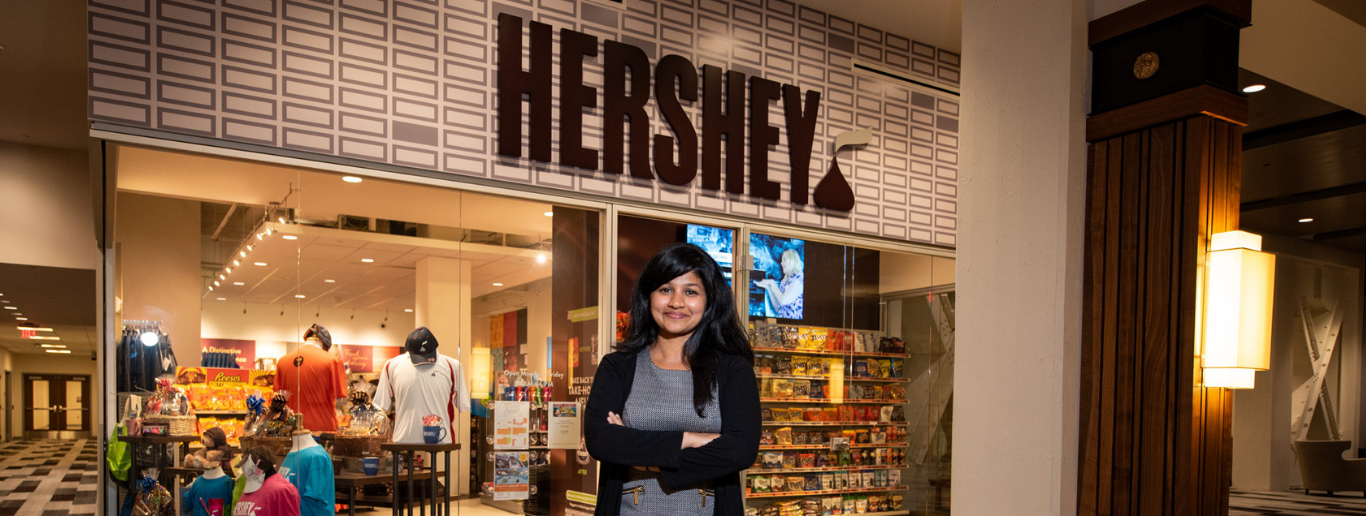

Photo credit: Wendy Palmer
One of the world’s top chocolate companies shared new plans for reducing its impact on the planet – including committing to set Science-Based Targets. But what sets Hershey apart from its peers is not this commitment. It’s the journey behind how it got here.
Leading up to today’s announcement, a lot happened behind the scenes - data was collected, numbers were crunched and methodologies chosen. It required time, human capital and expertise.
But Hershey didn’t do it alone. The company hired a graduate student to help with the heavy-lifting that comes before a target can be set.
Updating climate targets to make bigger impacts
A lot of companies are joining the Science-Based Target initiative (SBTi). And a lot more will. But there’s also a large group of companies that want to, and simply don’t know how. For this group, it’s a question of making the SBTi methodology align with their climate and business goals – like with Hershey.
The chocolate manufacturer set climate-related goals as part of its Shared Goodness program. Until today, these goals were the company’s blueprint for reducing its carbon footprint. But like many companies, the targets were not aligned with the most up-to-date climate science.
Joining the SBTi meant Hershey had to update its current greenhouse gas emissions goals to be in line with the level of decarbonization required to keep global temperature increase below 2 degrees Celsius compared to pre- industrial temperatures.
And on top of that, it had to be a smart business move.
Determine the company’s total environmental footprint
Harini Rengarajan, a Babson College graduate student and EDF Climate Corps fellow at the time, was hired to update the company’s current GHG emissions goals and determine whether setting a SBT was possible.
Before any target-setting could take place, Hershey first had to calculate the carbon footprint of its entire operations. The greenhouse gases that came from its own facilities, and also its Scope 3 emissions - the carbon emissions associated with supply chain and indirect activities. Scope 3 emissions often account for the majority of a company’s GHG emissions. And they’re also the most challenging to quantify.
Hershey’s current 25 X 25 goals, which includes reducing GHG emissions by 25% by 2025 compared to a 2009 baseline, do not include Scope 3.
This meant that a large amount of the company’s footprint was not accounted for. It also meant there was an opportunity to set more impactful goals and track performance, both internally and against its peers.
Use a two-part approach when setting a science-based target
Using her background in both engineering and business, and her experience in supply chain management and supplier engagement, Harini put together a GHG inventory that included Scope 1, 2 and 3 emissions.
She did so by meeting with stakeholders across Hershey’s departments to collect data and to better understand the ins-and-outs of the company’s business operations. She then calculated emission factors specific to the company’s specialized set of ingredients and services.
Next, Harini began the modeling. She studied six SBT methodologies before arriving at the option best suited for Hershey. She identified a range of targets that would hit the company’s goals and business drivers. Using a combination of criteria, such as timeframe, level of ambition and internal alignment, she presented Hershey with a potential plan to develop a Science-Based Target.
Finding value in partnerships
Today, Hershey joined leading companies in committing the SBTi. By next week, more companies will too. Each one will have a unique journey as to how it got to the point where it could make that commitment.
For some, a partnership might be a key ingredient in getting there.
Congratulations to Hershey for hitting this milestone.
The U.S. Underwent a Quiet Clean Energy Revolution Last Year


By Emily Kaldjian and Priya Barua
This article originally appeared on WRI’s Insights blog on January 23, 2019.
The public perception of U.S. clean energy has undergone a major shift. In a recent survey, 70 percent of respondents said America should produce 100 percent of its electricity from renewable energy sources; more than half thought renewables were a good idea even if they raise energy bills.
The change in perception could be a reflection of recent changes to the U.S. energy industry itself. While it didn't garner much attention, the United States saw unprecedented growth in renewable energy purchasing, development and commitments last year. Here's a look at the quiet clean energy revolution happening across the country:
1. Record corporate renewable energy purchasing
U.S. corporations have spurred a global movement towards purchasing renewable energy over the last decade, and 2018 was a banner year. Companies in the United States purchased a record 6.43 gigawatts (GW) of renewable power, enough to power more than 1.5 million American homes each year and more than double the previous record of 3.22 GW in 2015. The number of corporations entering in to renewable energy deals for the first time doubled. There were also a record number of deals through utility-offered, large-scale renewable energy purchasing programs, called "green tariffs."
A growing number of large buyers are also publicly committing to source 100 percent of their electricity from renewables. Today, there are 53 Fortune 500 companies with 100 percent renewable energy goals; there were 23 companies with the same target in January 2017.
2. U.S. cities make ambitious commitments to renewables
In the absence of a federal renewable energy push, local governments are taking matters into their own hands. More than 300 U.S. cities, towns or counties have made commitments to climate action.1 As of November 2018, 99 U.S. cities have committed to 100 percent renewable energy, up from just 50 cities a year ago.
Of these, six U.S. cities (Aspen, CO; Burlington, VT; Georgetown, TX; Greensburg, KS; Kodiak Island, AK; and Rockport, MO) have already met their 100 percent renewable energy goals through a variety of approaches, including on-site installations, off-site purchases and Renewable Energy Certificates (RECs).
Since many cities are just starting to set these commitments, they are at the beginning stage of the learning curve. In 2019, it will be important to watch how cities can push utilities to provide more clean energy.
3. Clean power champions take office
Many gubernatorial candidates who ran on ambitious renewable platforms were victorious in the midterm elections. Here are a few examples:
- Illinois's new governor, J.B. Pritzker, has called for the state to reach 50 percent renewables by 2025, doubling the current standard, and 100 percent renewables by 2050;
- Colorado's Jared Polis ran on a platform advocating for 100 percent renewable energy by 2040, along with programs to expand distributed energy resources and efficiency;
- New Mexico Governor Michelle Lujan Graham's plan calls for 50 percent renewables by 2030 and 80 percent by 2040.
- Maine's Governor Janet Mills endorsed a 100 percent clean energy goal by 2050, and is an advocate for expanding distributed generation; and
- Nevada Governor Steve Sisolak pinned his energy plan to a successful clean energy ballot initiative, which would amend the state's constitution to mandate 50 percent renewables by 2050.
4. Utilities actively plan for a clean energy future
U.S. utilities are responding to this increased demand for clean, modern energy. Michigan-based utility Consumers Energy announced in February 2018 that it will cut carbon emissions by 80 percent and stop using coal, as well as produce 40 percent of its power from renewable sources by 2040. This is a significant commitment from a utility that has traditionally relied primarily on coal. In May, Iowa-based MidAmerican Energy, which serves 770,000 customers, announced that it will become the first U.S. utility to source 100 percent of its customers' electricity needs from renewable energy upon the 2020 completion of a new wind farm. In December, Xcel Energy, one of the biggest utilities in the United States, became the first to commit to go completely carbon-free by 2050 (and 80 percent carbon-free by 2030). Minneapolis-based Xcel serves 3.6 million customers across eight states. Two days after its announcement, Platte River Power Authority, one of Xcel's competitors in Colorado, pledged to eliminate all carbon emissions by 2030.
And that's just the tip of the iceberg. Although less ambitious, a growing number of utilities are making voluntary public commitments to renewable energy or plans to reduce their emissions more than the amount required by state law. A review of Midwestern investor-owned utilities found that 75 percent of them had made these pledges, and we can anticipate this number to grow in 2019.
More momentum for U.S. clean energy
While fossil fuels are still the dominant energy source in the United States, recent renewable energy advances point to a distinctive shift in the U.S. energy system. Today, renewables provide 17 percent of total electricity generation. Projections indicate that wind, solar and storage can meet 80 percent of America's energy needs by 2050. We expect that the quiet clean energy revolution will only pick up more steam in 2019.
1 Platforms include: C40, ICLEI USA, Global Covenant of Mayors for Climate & Energy, Under2 MOU, and We Are Still In.
Image credit: Mark Rumsey/Energy.gov
The Best Way to Rank the Top Sustainability MBAs
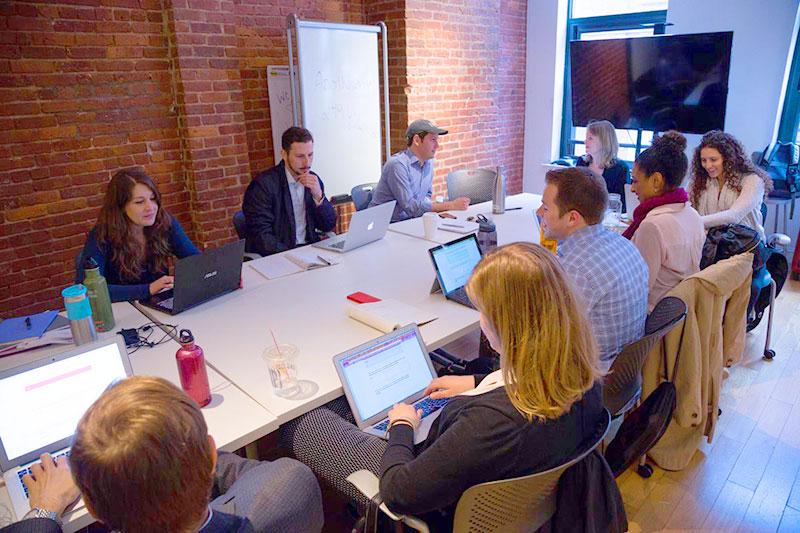

Co-written with Reagan Richmond
Mission. Purpose. Sustainability. These are the new touchstones of the business world. Consumers, employees, and watchdog groups are demanding that the companies they shop at and work for help solve the social and environmental challenges that the businesses themselves have helped create. Increased awareness, the transparency of the digital-native age, and the growing impacts of climate change mean we are no longer able to separate the fashion cycle from the waste cycle, or project risk from climate risk.
How have business schools responded to this new business imperative? When the Bard MBA in Sustainability launched in 2011 there were only a handful of business programs with a sustainability focus. Now the majority of top business programs are addressing the topic at some level. In most cases, the commitment is minimal with a research center or a course or two. The most advanced schools have gone further, adding a “bolt on” concentration. Yet even these MBAs, considered as a whole, are still single-bottom line focused. The great majority of courses remain organized around the dominant late 20th-century business vision of “maximizing shareholder value”.
Nevertheless, with the growing number of programs with sustainability concentrations, different groups are grappling with how to assess the impact of these programs. Net Impact shares a ranking each year of business programs that include environmental and social impact. Another list, the Corporate Knights Better World MBA Rankings gave the 2018 top spot to the UK's Warwick Business School. The decision cited Warwick’s “meaningful integration of sustainable development into half of its core courses, extensive faculty research on sustainability themes (212 sustainability publications over the past three years, averaging over one per full-time faculty), and strong gender diversity (42.5 percent of faculty are female).”
The best we can be
Relative to the pack, this is a very good performance. But, really, the best? What about MBA programs like Bard’s, where a focus on mission-driven business and sustainability is embedded into, not 50%, but 100% of the courses? From finance and economics, and from operations to organizations, Bard’s curriculum teaches how to establish and execute on the business case for sustainability.
And how about the female faculty ratio? Warwick: 42%, Bard: 47%. More importantly, what about the gender diversity of the student body? In a recent survey, Warwick was not even listed among MBA programs with over 40% female enrollment (though their Executive MBA recently achieved 50%.) In fact, the best MBA’s in the global survey were proud to say that they had achieved female enrollment of 44%. Bard’s figure? Over 65%.
So, if curricular focus and diversity are the top ranking factors, why wasn’t Bard’s MBA in Sustainability at the top of the list? As it turns out, Bard was not even on the list at all.
Privileging use-less publication
The technical reason for the Bard MBA’s absence from the Corporate Knights ranking relates to accreditation. Bard’s MBA program is fully accredited by the Middle States Association of Colleges and Schools, but that was not the stamp of approval required for inclusion in the ranking by the Knights.
The more substantive reason is an outdated educational philosophy embedded in the Corporate Knights criteria for excellence: publication by faculty members in scholarly journals. A full 50% of the Knights’ weighting is based on the number of faculty publications related to sustainable development in peer-reviewed journals, along with a further citation of those publications, also in peer-reviewed journals.
Clearly, intellectual leadership should be a factor in ranking sustainable business programs. But the “publish or perish” pressures in academia have badly skewed the mission of educators. Peer review as a process for knowledge production remains foundational in the natural and social sciences. But particularly in a world where knowledge production has been democratized, the vast majority of academics who aspire to advance causes of social justice and sustainability instead find themselves jumping over and over through useless hoops of irrelevant journal publication. The data is clear that most of them are literally wasting vast amounts of their time, toiling away at articles that virtually no one will read, and that will have no intellectual consequence. In short, faculty effort in the sustainability field is dominated by way too much focus on peer-reviewed writing, at the expense of engagement with effective, practical education addressing the critical problems at hand.
Sustainability as a problem-solving discipline
At the Bard MBA, we see business education for sustainability as a highly practice-based endeavor: we educate leaders to grow mission-driven businesses and non-profits and to transform existing organizations to a focus on social and environmental purpose. To that end, we take the lead from Bard’s established graduate programs in the arts, employing a highly accomplished practitioner faculty. Rather than focusing on research and publication for scholarly journals, our faculty work “9-5” developing sustainability solutions for businesses, and then bring their real-time experience into the classroom in our weekend intensive program. Our location in New York City and the deep talent pool of sustainable business leaders has allowed us to build this unique faculty.
The underlying intellectual framework of sustainable business is that environmental and social challenges are not only “negative externalities”, but in many cases, should be seen as design problems. And also, that radical, often ecologically inspired innovation can produce profitable solutions where people traditionally have seen social and environmental costs. This powerful shift in perspective is only a couple of decades old, and in that short time, it has taken the business world by storm. Given this brief intellectual history, one can count on the fingers of a hand or two the number of people in the world who have (1) deep practical knowledge of sustainable business, (2) are at the forefront of the field intellectually, (3) are great teachers, and (4) also focus their professional lives on peer-reviewed publication. At Bard, we opt for the first three.
Peer-reviewed publication is one thing. Intellectual leadership is another. Bard MBA Professor Hunter Lovin’s helped launch the sustainable business field with her 1999 book, Natural Capitalism. Her latest book, just released is A Finer Future: Creating an Economy in Service to Life. Operations Professor Jennifer Russell has recently authored a UN report on developing the circular economy which was officially launched at a press conference at the World Circular Economy Forum. Human Resources Professor Kris kohls’ latest book is Becoming a Sustainable Organization. And Entrepreneurship Professor Alejandro Crawford and his team have created a powerful on-line platform called RebelBase to support mission-driven, disruptive innovation worldwide.
There is a need for peer-reviewed research that can help us better understand sustainable business strategies and outcomes. But it is a minor need in terms of building MBA programs to create a generation of sustainable business leaders. Peer-reviewed publication is an extremely limited way to measure the intellectual influence of MBA programs in Sustainability, and it should certainly not have a 50% weight in determining the “best” MBA for building a finer future.
Who provides the best sustainable business education?
What would be the best measure of the best graduate business education in sustainability? Conceptually, the answer is simple. MBA Alumni changing the world.
Here are two possible metrics. First, what percent of graduates are following their passions and pursuing successful, high-impact careers in sustainable business? And two, what have they collectively accomplished, weighted by their years out of the program?
Granted, there is not publicly available data to answer these questions. But an enterprising researcher could get a first approximation by mining Linked-In, and doing some survey work. Perhaps an Assistant Professor of Management somewhere could even get a peer-reviewed article out of writing up the results.
In the absence of this kind of direct evaluation of student success post-graduation, another metric to consider would be MBA student performance against other programs in international sustainability business case competitions, again, considering the number of students in the sustainable MBA concentration or program.
Last year, Bard’s MBA team placed second in the Patagonia Case competition, in a field that included MBA teams from MIT, Yale, NYU, Wharton and the University of Michigan. Cory Skuldt, a Bard team member noted that: “Among all the teams competing, we were uniquely prepared to demand an uncompromising level of climate responsibility and identify the business opportunity in doing so”.
At the end of the day, The Best Sustainability MBA Ranking needs to assess what is most important: student’s empowered with tools to change the world.
Previously published on the Bard MBA blog.
The NFL’s Politicization: Super Bowl Ads Anger and Inspire


I hold that the toughest balancing act to play when watching the Super Bowl is knowing when to talk and when to listen to the TV. The play-by-play commentary is insightful and useful and the halftime show is always intriguing, even if it’s oftentimes underwhelming. So what do we skimp?
Remarkably, most of us choose to sacrifice the commentary so we can pay razor-sharp attention to the commercials. Year in and year out, they’re sure to insight belly laughs, head scratches and inspiring, memorable moments. For $5 million per 30 seconds of screen time, Super Bowl advertisements have become must-see TV. And as the NFL gains notoriety as an ever-politicized organization, the ads become more and more noteworthy.
A 2017 analysis conducted by The New York Times revealed that, save for Trump Hotels, the NFL is the only non-news media organization in the top 10 of most polarizing brands measured by favorability among President Trump and Hillary Clinton voters. This report was conducted on the heels of the divisive protest of NFL players, particularly African Americans, kneeling during the National Anthem.
The kneeling, started by now blackballed quarterback Colin Kaepernick, was already headlining news when Trump said, “Wouldn’t you love to see one of these NFL owners, when somebody disrespects our flag, to say, ‘Get that [expletive] off the field right now.’” Conservative football fans rallied around the president, vowing to boycott the NFL as long as players were kneeling. It was un-American to not participate in the National Anthem; it was an outrage against the veterans and armed forces who sacrificed their lives for the flag that the players were now disrespecting, they said.
The NFL owners, one full season (another Tom Brady Super Bowl-appearing season, might I add) later, unanimously banned on-field kneeling. Liberals dissented; they argued that kneeling was never about the flag - isn’t the right to free speech and protest what the armed forces are protecting and advocating for in their duty? The NFL was caught in a tug-of-war battle to appease one of the most politically split fan bases in all of sports.
A FiveThirtyEight analysis shows that professional basketball fans are more left-leaning and likely to be outspoken critics of Trump while college football fans tend to be more conservative and thus harsh of the kneeling protests. The NFL, however, is the least partisan fan base of those studied, despite having the largest share of Google searches. This creates an environment where NFL policies are likely to irritate a large share of the viewers, whether conservative or liberal.
Author Mark Leibovich of the newly released Big Game: The NFL in Dangerous Times details the recent politicization of the NFL and influence Trump has on the culture of the sport. “You have [the owners] sitting around saying, ‘What are we going to do to make sure Donald doesn’t pipe up again? If he pipes up again, we’ve got problems,’” Leibovich told The Atlantic after obtaining a recording of concerned NFL owners talking about the kneeling controversy.
Not so much as a month later, Nike unveiled a powerful new partnership and commercial featuring former NFL quarterback Kaepernick, the brainchild and face of the kneeling protest. Boycotts, again, were relentless and widespread. Consumers were burning Nike gear, snipping the logos off of apparel and spreading the hashtag #JustBurnIt to rival Nike’s famed “Just Do It” slogan. Nike sales, much to boycotters dismay, actually increased following the release of the ad. But the fact remains that Kaepernick remains an NFL free agent, owing largely to the baggage and controversy that comes with signing a player who is currently in the thick of a legal battle against the NFL.
At the time of this article, the Gillette video has 1.2 million thumbs down on YouTube (compared to 670,000 thumbs up votes) and dozens upon dozens of comments lambasting the Boston-based shaving company. A common theme seemed to prevail when sifting through the comments: Gillette is a shaving company, why don’t they just stick to making razor blades?
There will, inevitably, be at least a handful of commercials that feature politicized messages. And to mirror that, there will also inevitably be disgruntled viewers who don’t understand why a company needs to stick their neck into a topic that doesn’t coincide with their business plan.
But why shouldn’t brands use their platform and millions of advertisement money to speak for what they believe, spark conversation and, most importantly, be on top of consumers’ minds? And why shouldn’t athletes use their platform and influence to do the same? Some people, I suppose, just enjoy athletes staying in their lanes, failing to even respect the most admirable philanthropic endeavors from stars. Look no further than NBA star LeBron James opening a school for at-risk youth in his hometown yet somehow still is receiving criticism.
But for all the temporary boycotts and backlash companies may receive for tailoring their messaging to a core value or belief, research suggests that consumers are actually drawn to brands that take stands. The Accenture study of 30,000 consumers found that “the majority of consumers prefer buying from brands that take a stand on issues they care about.”
As one of those who considers myself in the majority of consumers, I am surely rooting for a politicized Oreos commercial (or one like this 1995 Doritos commercial, starring two governors, Mario Cuomo or Ann Richards, who lost their reelection bids in the Republican rout during the 1994 midterms). I would love to rationalize buying a few dozen cartons of double-stuffed magic by saying I completely agree with the company’s values.
Stay updated with the "Brands Taking Stands" movement by subscribing to our weekly newsletter.
Image credit: Keith Allison/Flickr
Speaker Proposals Wanted for 3BL Forum: Brands Taking Stands
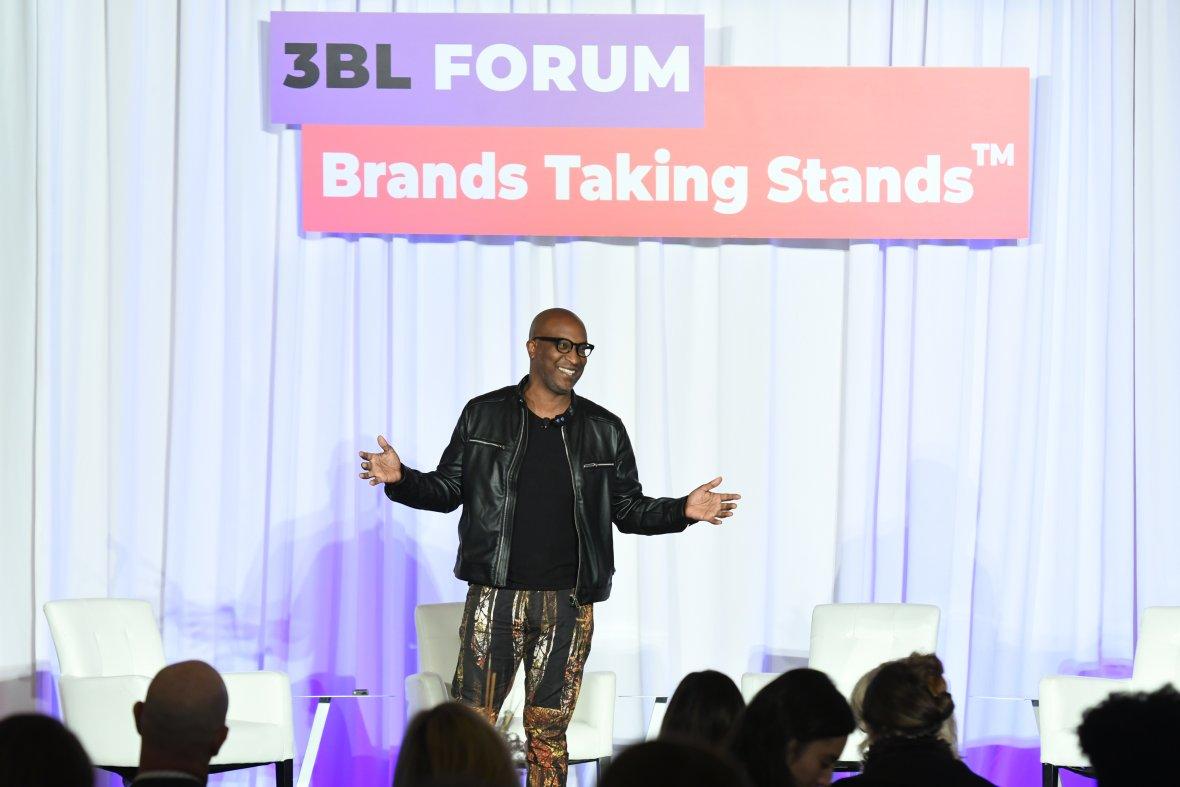

Presenter proposals are now being accepted for 3BL Forum, the annual gathering of purpose-driven business leaders who are eager to accelerate sustainable business through continued collaboration and learning.
The theme for this year’s Forum is “Brands Taking Stands – What’s Next,” with a focus on the business drivers behind innovative and impactful corporate responsibility programs that as have seen, increasingly include social activism.
The event will be held at MGM National Harbor, just outside Washington, D.C., on October 29 and 30.
“Corporate citizenship today is measured by progress across a broad environmental, social and governance [ESG] agenda,” said Dave Armon, CMO of 3BL Media and publisher of CR Magazine. “By convening hundreds of business leaders for this important conversation, we can hasten the pace of change.”
Through its ongoing focus on Brands Taking Stands, 3BL Forum has become a central event both for “humble companies” intent on quietly doing important ESG work as well as brands eager to connect to social issues, added Armon, who reminds us that previous events in 2017 and 2018 witnessed the release of new research on corporate activism.
Is your organization pushing the envelope when it comes to taking a stand on political and social issues? What’s hard? What’s risky? What works?
We’re asking prospective speakers, presenters, panelists and other thought leaders to access 3BL Forum’s presenter prospectus here and submit it via email to [email protected]. The submission deadline for all presenter proposals is Monday, April 1.
The key themes for this year’s forum will include:
- Brands Taking Stands...the evolution continues
- Employee activism
- Artificial intelligence, blockchain and tech drivers for sustainable development
- Not legacy VERSUS sustainable companies, but legacy companies AND sustainable businesses
- Investor perspectives on ESG and sustainability
- Imperative of a diverse and inclusive workforce and corporate culture
- Filling the pipeline of talent for the future
- Sustainability communications beyond ratings and rankings
- Expectations of an activist, action-driven generation
- Amplifying voices, not standing on the sidelines
3BL Forum will feature two days of dynamic and engaging speakers, panelists, conversations and interviews. In addition, many presenters will use the conference to announce new corporate initiatives or release significant research findings on corporate responsibility, talent acquisition and progress toward the United Nations Sustainable Development Goals (SDGs). Conference attendees bring an array of corporate responsibility experience and expertise as they seek to learn and engage. To maximize the audience experience, the conference agenda promises to be fast paced and designed to cover a wide range of topics and issues.
One key highlight of 3BL Forum is the Awards and Recognition Dinner, where recipients of the CR Magazine Responsible CEO of the Year Awards will be announced – be sure to take a look at last October’s edition, which showcased the nominees. Nominations for this prestigious award may be submitted here.
3BL Forum’s organizers welcome submissions by CEOs, corporate responsibility practitioners and senior leaders on topics aligned with the Brands Taking Stands movement. In the event your proposal is accepted as part of the program, 3BL Forum’s executive producer will work with prospective presenters to identify where the topic fits into the agenda and how to best showcase content at the conference, whether that will be a main stage panel discussion, a one-on-one interview, an “issue table,” break-out session or another format.
A complete list of companies that participated in last year’s 3BL Forum is here. And just so you know, in less than 48 hours, the October 2018 event generated over 2 million social media impressions using the hashtag #BrandsTakingStands.
We look forward to seeing you at National Harbor, Maryland in October!
The SDGs Drive Innovation in the Energy and Infrastructure Sectors: Saipem Shows How
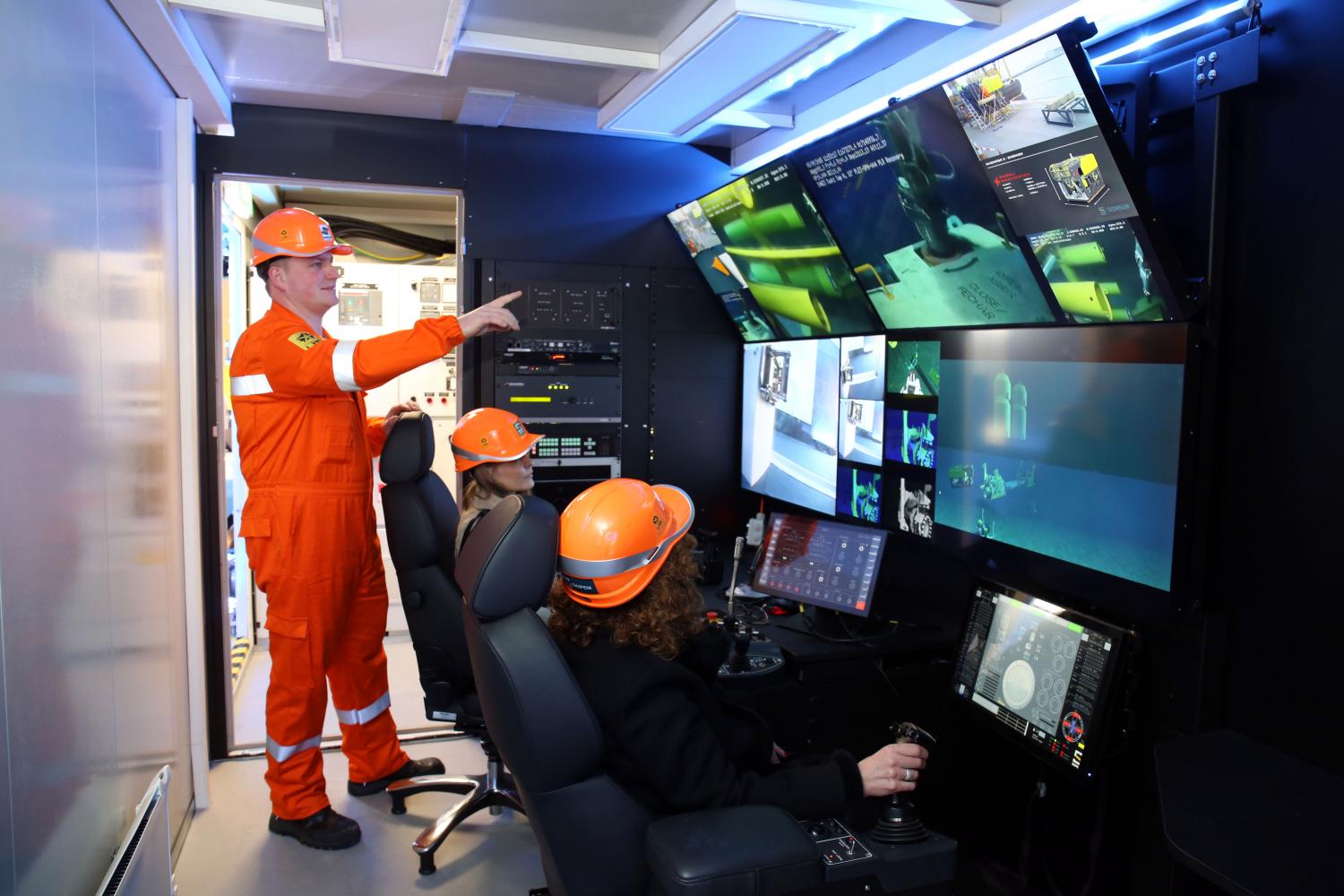

This article series is sponsored by Saipem and produced by the TriplePundit editorial team.
Adopted in 2015, the United Nations Sustainable Development Goals (SDGs) put forth a roadmap for addressing the world’s most pressing social, environmental and economic challenges by 2030. Unlike their predecessors, the Millennium Development Goals (MDGs), the SDGs explicitly call on business to play a role in tackling global challenges like access to energy and clean water.
As such, several of the goals specifically target industry and the role they have to play in building a more sustainable and equitable world. SDG9 (Industry, Innovation and Infrastructure), for example, calls on stakeholders in the public and private sectors to build more resilient infrastructure, promote inclusive and sustainable industrialization, and foster innovation for a brighter future.
SDG9 may prove particularly relevant for industries already in flux, such as the energy and infrastructure sectors. As the renewable energy market continues to grow, innovation in these industries has become a key to growth now and for the future.
Saipem, an Italian-based energy services company, believes that innovating its business model is the way forward. “The oil and gas and the whole energy industry is experiencing a transformation of its complex system,” Mario Marchionna, Saipem’s head of technology innovation and development, told TriplePundit. “As a consequence, the [industry] … needs to sharply renew its focus in order to cope both with near and with future challenges.”
Saipem has in its portfolio a series of innovation projects poised to modify its way to work—which record an increased attitude to collaboration, a different way to shape its supply chain, and role changes due to new business models. But what does innovation look like in one of the most established industries in the world?
Saipem: One company’s approach to SDG9
Saipem is a world leader in engineering and drilling activities and in the development of major projects in the energy and infrastructures sectors. The company is adept at operations in harsh environments and remote areas, such as the deep ocean, and it strives to remain forward-thinking on the technological front.
At least 70 percent of Saipem’s research and development budget is devoted to what Dr. Marchionna calls “radical solutions” or to fields outside of the traditional oil and gas market. For example, in 2017 Saipem successfully installed the first floating wind farm in the world, the Hywind Scotland Project. The company devised a new process to lift, handle, and install 6 megawatts of wind turbines on floating spars anchored to the seabed—making use of its core competencies for operating in all environments. Saipem and its subsidiaries are now developing more solutions for the offshore floating wind segment, as well as a floating solar park concept.
Along with advanced wind farms, Saipem invests in innovation opportunities in emerging marine technologies, such as wave and tidal power, along with energy storage and renewable hydrogen. The company is also looking to reinforce its presence in non-energy related markets such as infrastructures for sustainable mobility, water pipelines and environmental services.
Meanwhile, the company is taking steps to increase the efficiency and sustainability of its existing operations within the oil and gas sector, by exploitation of natural gas and by managing the overall CO2 value chain.
“Targeting progressive energy decarbonization, Saipem is pursuing diversified actions to reduce its own CO2 emissions and, even most importantly, to enlarge the offer to its clients in less climate-impacting fields, acting as an innovative solutions provider,” said Dr. Marchionna. “Technologies and innovation are among the keys for reaching this goal and gaining a competitive advantage.”
The company’s strategic plan reinforces its commitment to innovation. “Innovation, one of the main pillars, is leverage for strengthening and consolidating the company’s competitive positioning to tackle future challenges,” explained Dr. Marchionna. “The new innovation model is in fact the synthesis between the urgency to implement concrete solutions in the short term (mostly driven by current commercial projects) and the need to develop novel solutions reflecting the evolving macro-scenarios—especially the energy one.”
3 ways Saipem makes innovation a part of its culture
As the company invests in technology and operational improvements, Saipem is also taking steps to infuse innovation into its overall company culture—and this may prove to be the most lucrative investment of all. The following three examples illustrate how Saipem creates space for an inspired workforce to design technical solutions that can move the needle forward on the speed and quality of the company’s work.
- The Innovation Factory
Saipem launched the Innovation Factory in 2016. This idea incubator and fast-prototyping lab aims to tackle problems holistically and develop ground-breaking responses to challenges in the oil and gas sector.
Through the Innovation Factory, Saipem team members convene for design thinking sessions in a physical and digital space, where they discuss solutions to the pressing challenges identified by the company’s top management. The cross-functional team—selected from within the company according to their propensity for lateral thinking, creative problem-solving, entrepreneurship and collaboration skills—then presents their ideas to the group in the form of storytelling.
Senior managers, who serve as project sponsors, select the most promising ideas on which to concentrate prototyping efforts “ . . . on a ‘scale fast or fail cheap’ basis,” Dr. Marchionna said. “The objective is to modify behaviors through viral change, while at the same time trying out innovative technological solutions.”
This physical and cyber network environment stands in contrast to the traditional office. It engages team members at all levels of the company in innovation and problem-solving, while assessing potential prototypes quickly and efficiently. “The key to success is the human factor of in-house innovative thinkers and the external ecosystem,” Dr. Marchionna added.
“Constant collaboration with external stakeholders, such as universities, R&D centers, startups, and traditional and non-traditional partners, is a key pillar,” Mr. Marchionna continued. “Also, collaboration, internally in Saipem, is even more relevant in order to overcome the silos and the comfort zones with little sharing of data that are usually found in big companies.”
- Innovation Trophy
With its Innovation Trophy, Saipem seeks to reward employees who have made their marks by bringing their innovative spirit, advantages and concrete results to the company.
Since its inception in 2003, attention was mostly directed toward technology developments. “And, a few of them have laid out Saipem’s most important successes in the recent past,” Dr. Marchionna told 3p.
In keeping with the company’s new innovation strategy, the scope of this employee engagement award has expanded in recent years to include process innovations, such as changes in workflow, work tools and management practices. In 2015, the company also introduced a special award to acknowledge the sustainability value of its operations.
- Technology Days
Saipem hosted its first Innovation and Technology Days in 2017. The company opened the doors to one of its technological hubs in Marghera, near Venice, Italy, to representatives of the media and financial community to present new projects and technologies for the oil and gas sector. This event further signified the creation of company value through innovation.
“Other Technology Days were held in 2018 in Cartagena, Spain, about our offshore wind capabilities, and in Algeria, mostly related to our distinguished know-how in LNG [liquified natural gas] technology,” Dr. Marchionna said.
The bottom line
In the oil and gas sector, the focus on innovation not only helps companies like Saipem contribute to the global sustainable development agenda under SDG9, but it also allows them to maintain a competitive advantage and remain relevant in a rapidly changing world.
For its part, Saipem continues to seek out cutting-edge ways to bring projects to fruition. “By scouting out new technologies within and outside of the oil and gas industry, we are able to identify disruptive emerging technologies as opportunities that could have a high impact on Saipem’s business,” Dr. Marchionna said.
Image credit: Saipem